Is there a future for 'tanks' that suffered mass destruction in the Ukrainian War?

by
In the Russian invasion of Ukraine that began in February 2022, a large number of images and videos of Russian tanks that were destroyed by the Ukrainian army or stuck due to lack of fuel were uploaded to the Internet. Regarding Russian tanks, which have nothing to do with the anti-tank missile 'Javelin' provided by the United States to Ukraine, the Ministry of Finance said to the Self-Defense Forces, 'Compared to tanks and mobile combat vehicles, Javelin is a cheap equipment.' While there are discussions to review the way tanks should be, such as pointing out, the British weekly magazine The Economist discusses why Russian tanks suffered a crushing defeat and future tanks.
Does the tank have a future?
https://www.economist.com/interactive/international/2022/06/15/does-the-tank-have-a-future
The Economist begins by explaining tank construction. According to it, the front of the Russian tank has armor called `` glacis '', which makes it easy to deflect missiles, so it is very strong against attacks from the front.
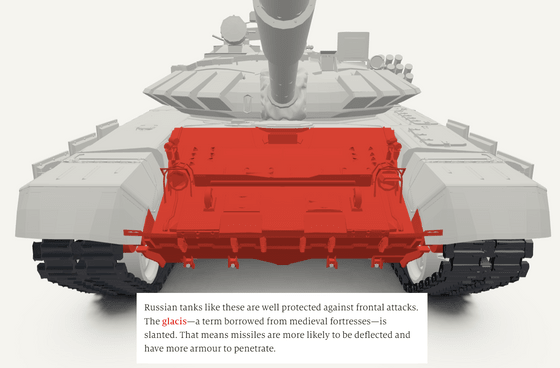
On the other hand, the side armor is weaker. This is true for many tanks, but tanks of the former Soviet design are said to have particularly poor flank protection.
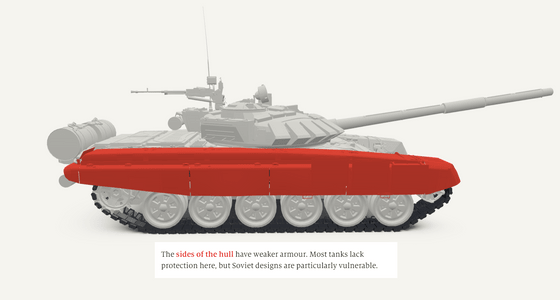
Furthermore, the weakest part is the turret.
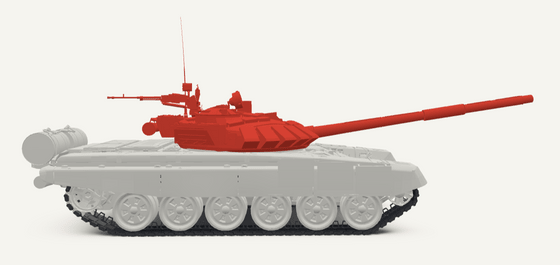
Therefore, although it is strong against old-fashioned anti-tank rockets that hit glacis ... ...
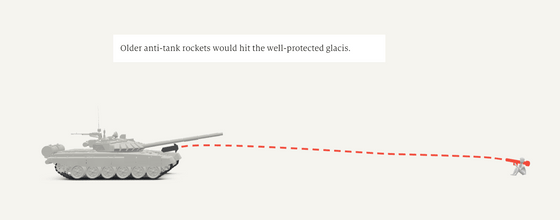
It doesn't offer enough protection against javelins that swoop down from a height of 150m and aim at the turret.

Also, since the ammunition and crew are not protected by blast doors, there is a high chance that the ammunition will explode if the missile penetrates the armor. The reason for this design is that it is lightweight and highly maneuverable, under the assumption that it will run large and quickly across the plains of Europe and that the tanks will be scattered so that they will not be swept away by nuclear weapons. It is said that a small tank that can be mass-produced was required.
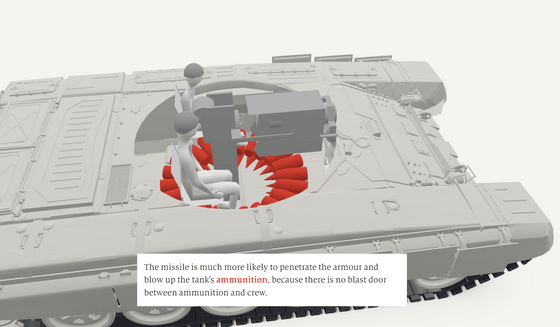
The Russian
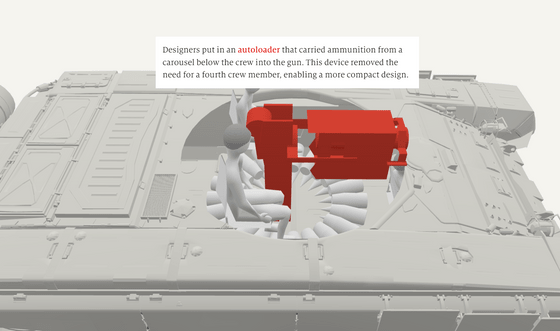
But there are also drawbacks. The American
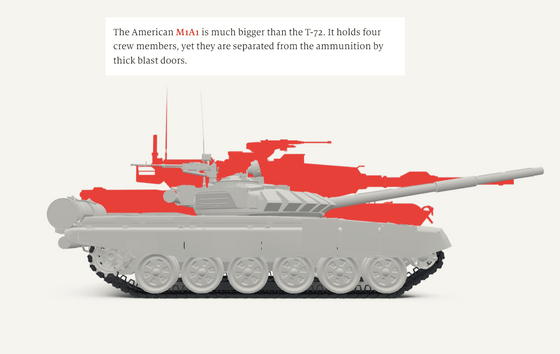
Since Russia invaded Ukraine, Russia has lost at least 774 tanks, half of which have been destroyed, one-third captured by Ukraine, and the rest destroyed, according to the report. This means that about a quarter of the 3,000 tanks that Russia had before the war were lost.
There are two main reasons why so many Russian tanks and armored vehicles are being destroyed. The first is anti-tank guided missiles like the Javelin. In particular, unlike the early wire-guided anti-tank missiles, such as the American Javelin and the jointly developed British-Swedish
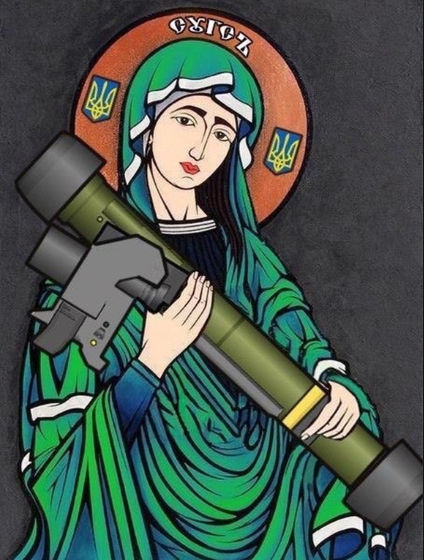
by Ron Frazier
And the second threat is armed drones. In Ukraine, the Bayraktar TB2 , a Turkish-made unmanned combat aircraft smaller than the Cessna aircraft, is active. Ukraine also utilizes loitering-type weapons such as the Switchblade, an advanced attack drone made in the United States, from suicide drones that attach Soviet-era anti-tank grenades to ordinary drones.
The reason such drones are able to fly over Ukraine is said to be related to Russia's failure to eliminate Ukrainian air defenses immediately after the war began, making it impossible for Russian fighters to patrol the skies. About. Also, modern armies value the concept of ` ` combined arms '' in which various elements such as tanks, fighters, and infantry compensate for each other's weaknesses, but in the Ukrainian war Russian troops wandering the battlefield without air defense means. And, there were many isolated tank units from the reconnaissance corps.
From this, The Economist commented, 'Given that Russia is using it so poorly, it would be a mistake to write a tank obituary based on only battle results.' He also pointed out that an increasing number of state-of-the-art tanks have functions as motherships for drones, and said, ``Tanks do not perish, they evolve.''
Related Posts:
in Ride, , Posted by log1l_ks







